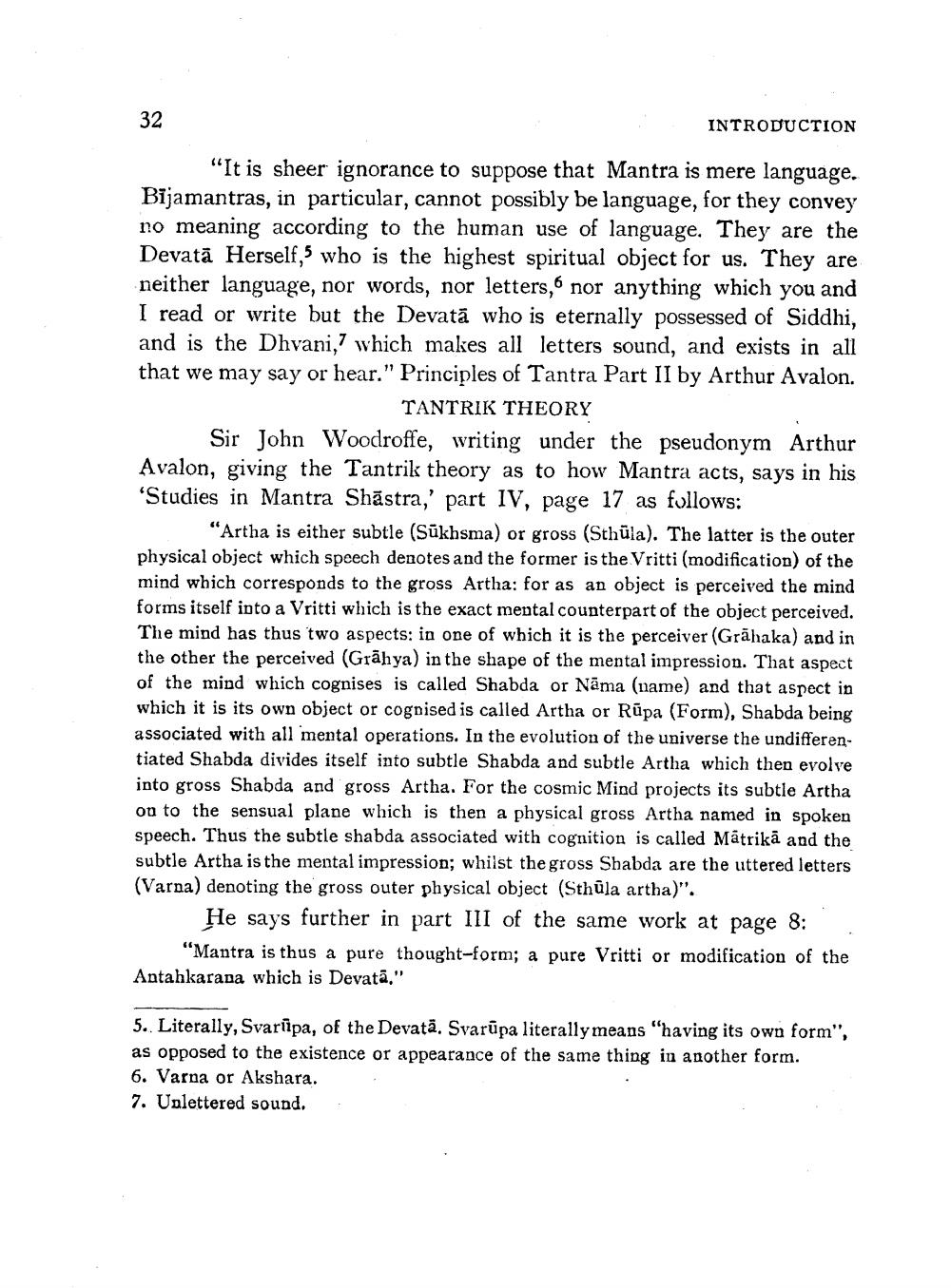________________
INTRODUCTION
"It is sheer ignorance to suppose that Mantra is mere language. Bijamantras, in particular, cannot possibly be language, for they convey no meaning according to the human use of language. They are the Devatā Herself, who is the highest spiritual object for us. They are neither language, nor words, nor letters, nor anything which you and I read or write but the Devatā who is eternally possessed of Siddhi, and is the Dhvani,? which makes all letters sound, and exists in all that we may say or hear." Principles of Tantra Part II by Arthur Avalon.
TANTRIK THEORY Sir John Woodroffe, writing under the pseudonym Arthur Avalon, giving the Tantrik theory as to how Mantra acts, says in his 'Studies in Mantra Shāstra,' part IV, page 17 as follows:
"Artha is either subtle (Sukhsma) or gross (Sthūla). The latter is the outer physical object which speech denotes and the former is the Vritti (modification) of the mind which corresponds to the gross Artha: for as an object is perceived the mind forms itself into a Vritti which is the exact mental counterpart of the object perceived. The mind has thus two aspects: in one of which it is the perceiver (Grāhaka) and in the other the perceived (Grāhya) in the shape of the mental impression. That aspect of the mind which cognises is called Shabda or Nama (name) and that aspect in which it is its own object or cognised is called Artha or Rūpa (Form), Shabda being associated with all mental operations. In the evolution of the universe the undifferentiated Shabda divides itself into subtle Shabda and subtle Artha which then evolve into gross Shabda and gross Artha. For the cosmic Mind projects its subtle Artha on to the sensual plane which is then a physical gross Artha named in spoken speech. Thus the subtle shabda associated with cognition is called Mátrikā and the subtle Artha is the mental impression; whilst the gross Shabda are the uttered letters (Varna) denoting the gross outer physical object (Sthūla artha)".
He says further in part III of the same work at page 8:
"Mantra is thus a pure thought-form; a pure Vritti or modification of the Antahkarana which is Devatā."
5. Literally, Svarūpa, of the Devatā. Svarūpa literally means "having its own form", as opposed to the existence or appearance of the same thing in another form. 6. Varna or Akshara. 7. Unlettered sound.




